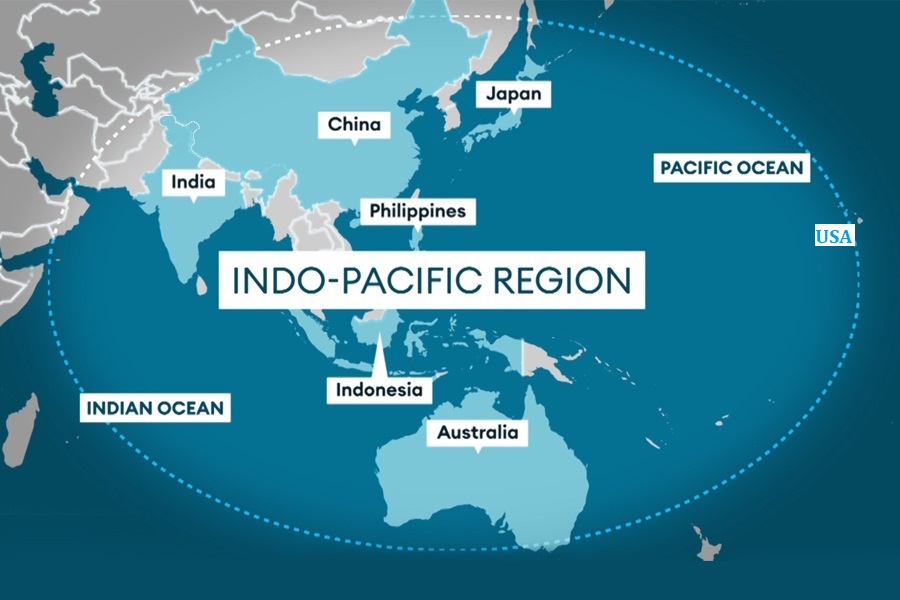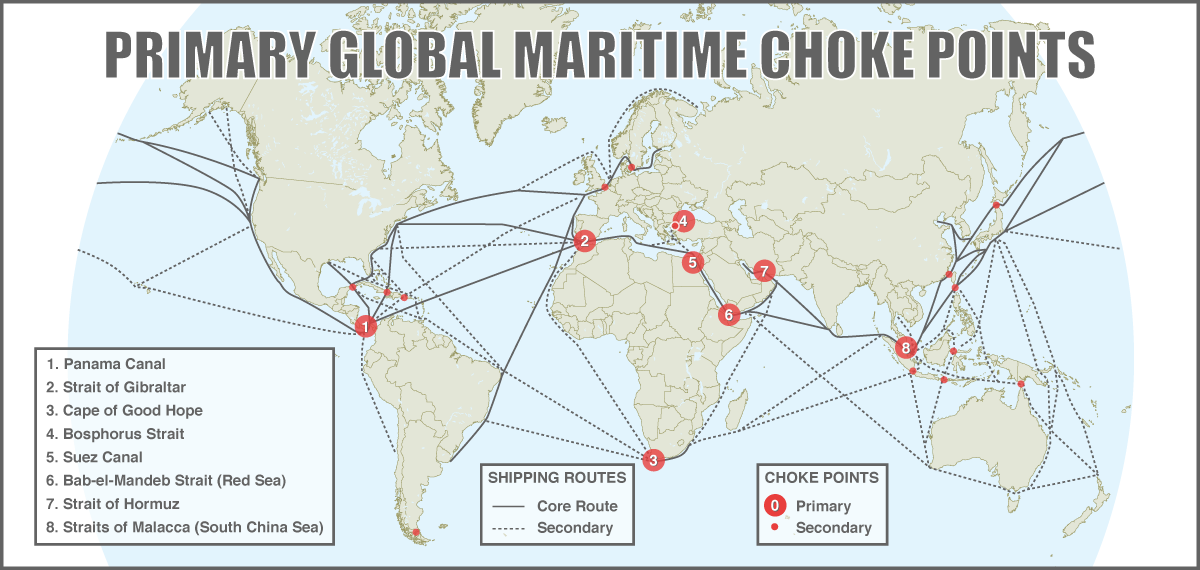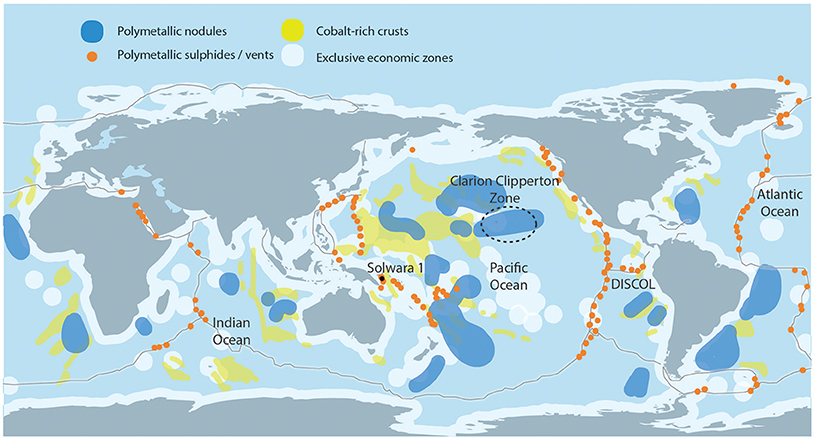Indo Pacific region
2022 OCT 26
Mains >
International relations > India Foreign Policy > International groupings
IN NEWS:
- While delivering the inaugural address at 18th Heads of Asian Coast Guard Agencies Meeting (HACGAM) in New Delhi, Defence Minister Rajnath Singh reaffirmed India’s resolve for open, free and rule-based maritime borders in the Indo-Pacific region.
- Australia and Japan agreed to share more sensitive intelligence and deepen their military cooperation as they signed a security pact aimed at countering China's rising military assertiveness in the Indo-Pacific region.
INDO PACIFIC REGION:
- In the 21st century, the region which is the confluence of the Indian Ocean and the Pacific Ocean is considered to be the arena of another ‘Great Game’ involving the US, China, EU, Russia, India, Japan, and Australia.
- The Indo-Pacific construct means different for different countries. For the US, it extends up to the west coast of India whereas for India it includes the entire Indian Ocean and the western Pacific.

- Geography: 65% of the world’s oceans and 25% of its land
- Population: Over half the world’s people, including 58% of youth
- Economy: 60% of global GDP, 65% of world trade and 2/3rd of global economic growth
SIGNIFICANCE OF INDO-PACIFIC FOR INDIA:
- Global peace:
- All nuclear powers, barring Israel and the United Kingdom, have a presence in the Indo-Pacific. Any tensions in the region can have ripple effect on global peace and stability.
- Freedom of navigation:
- National development is highly dependent on secure Sea Lines of Communication (SLOCs) and the Indo-Pacific maritime space is central to global commerce.
- Strategic significance:
- Important choke points like the Malacca strait are located in the region. Hence, control over the region will have natural military advantages — making the region the geopolitical pivot to controlling the rest of Asia.

- Economic significance:
- Approximately 95% of India’s trade by volume, and 68% by value, is moved through the seas and oceans. India’s “sea dependence” for oil is around 90%. Hence, significant presence in the region is vital for India’s economic security.
- Counter China:
- Engagement in the region, particularly along the South China Sea, serves to counter China’s growing influence in the region.
- Support India’s interests:
- India’s major partners like ASEAN, USA, Australia and Japan are located in the region. India also has close relations with many of the small island nations in the region.
- The success of initiatives like Act East policy and Asia Africa growth corridor depends on India’s proactive role in the region.
- Address climate change:
- The region is highly susceptible climate change induced vagaries like sea level rise and frequent El Nino. Hence, cooperation among the nations in the Indo pacific are vital in the combating and adapting to climate change.
- Resources:
- The region has abundant reserves of deep sea minerals such as polymetallic nodules and cobalt rich crust.

CHALLENGES FACED BY INDIA:
- ‘Cold war II’:
- The region has become a focal point in the new cold war brewing between the US-led western block and China.
- The unpredictable nature of North Korea aggravates the threat of conflict in the region.
- Chinese aggressions:
- China is combining its economic, diplomatic, military, and technological might as it pursues a sphere of influence in the Indo-Pacific.
- This is evident from the economic coercion of Australia to the conflict along the Line of Actual Control with India to the growing pressure on Taiwan and conflicts with neighbours in the East and South China Seas.
- Dependence on China:
- Despite strained relations, China is still a major trading partner for most countries in the region, including India.
- Rising militarisation of Indo-Pacific:
- Besides the military presence of US (in Diego Garcia) and France (in Reunion), China has been modernising its Djibouti military base and is seeking additional facilities in countries such as Myanmar, Thailand, and Sri Lanka.
- There are also reports of a military base being developed at the Agaléga island by India.
- Under the AUKUS, the US and the UK will help Australia to acquire nuclear-powered submarines.
- Fear of protectionism:
- Delhi’s decision to walk away from the Regional Comprehensive Economic Partnership (RCEP) and its new emphasis on Atmanirbhar Bharat have generated widespread concerns about India returning to protectionist ways.
- Absence of large trade agreements:
- Bilateral trade pacts cannot be a substitute for larger regional agreements, but India is not part of any today. Delhi is also not on the same page as its partners like the US, EU, Japan, and Australia on the emerging digital trade issues. This complicates the creation of strong trade relations.
- Underutilized maritime sphere:
- Due to strained relations with its two largest neighbours, China and Pakistan, India has had to prioritise its strategic and military posture from a largely continental perspective. Therefore, the country’s Maritime potential remains underutilized.
INDIAN EFFORTS IN THE REGION:
- Policy measures:
- ‘SAGAR’ (Security and Growth of All in Region):
- It is India’s policy or doctrine of maritime cooperation in the Indian Ocean region.
- The government has introduced the concept of SAGAR and believes in an Indo-Pacific that is free, open and inclusive, and one that is founded upon a cooperative and collaborative rules-based order.
- Indo-Pacific division in the Ministry of External Affairs (MEA):
- India created an Indo-Pacific division within the MEA, integrating work related to the Indian Ocean Rim Association (IORA), ASEAN and the Quad.
- Building internal capabilities:
- Sagarmala project:
- Asia-Africa Growth Corridor:
- AAGC is an economic cooperation agreement between the governments of India, Japan and multiple African countries.
- Necklace of diamond strategy
- In a counter to China’s String of Pearls strategy, India has started working on the 'Necklace of Diamonds' strategy.
- Fostering cooperation:
- India is increasing economic ties with countries in the region. Eg: Comprehensive Economic Partnership Agreements with Japan, South Korea, and Singapore.
- This effort is exemplified by the “Act East Policy”, comprising economic engagement with Southeast Asia and strategic cooperation beyond that to East Asia (Japan, South Korea), Australia and New Zealand.
- Through the Forum for India-Pacific Islands Cooperation (FIPIC), India is moving towards engaging with the Pacific Island countries.
- Strategic measures:
- Quad:
- The Quadrilateral Security Dialogue, also known as the Quad, is an informal strategic dialogue between the United States, Japan, Australia and India.
- One of the primary objectives of the Quad is to work for a free, open, prosperous and inclusive Indo-Pacific region.
- https://www.ilearncana.com/details/QUAD/3288
- Net security provider:
- Through anti-piracy patrolling, boosting maritime security capability and enhancing maritime domain awareness with partner countries and even dealing with natural disasters in the region, India has been fulfilling its role as a net security provider.
- Defence exercises:
- Indian armed forces are participating in several military exercises in the region. Eg: Malabar exercises with US, Japan and Australia, Exercise Maitree with Thailand, and Garuda Shakti with Indonesia.
- Arms export:
- Sale of the Brahmos supersonic cruise missile systems to the Philippines lend a sharper edge to India’s engagement with the Indo-Pacific
- Capacity-building with countries in the region.
- Creating regional partnerships through port access and/or logistics agreements (with the US, Oman, Singapore, South Korea and Indonesia)
- Defence lines of credit for Vietnam, Seychelles, Mauritius and Bangladesh
- Institutional measures:
- Multilateral forums such as the Indian Ocean Rim Association (IORA) and the Indian Ocean Naval Symposium (IONS)
- Build Back Better World (B3W): It is an initiative undertaken by the G7. Launched in 2021, it would provide an alternative to China's Belt and Road Initiative.
- Indo-Pacific Economic Framework for Prosperity
CONCLUSION:
India must continue to pursue a constructive agenda for the Indo-Pacific and foster cooperation through bilateral, plurilateral, and multilateral platforms. It should forge partnerships with a thoughtfully chosen set of allies in the region, and optimise strategic partnerships for its own growth and development, while negating the increasing influence of China in the region.
PRACTICE QUESTION:
Q. The Indo-Pacific region has emerged as a new theatre in geopolitical affairs and the current geopolitical conjuncture presents India with certain unique opportunities. Critically analyse.


